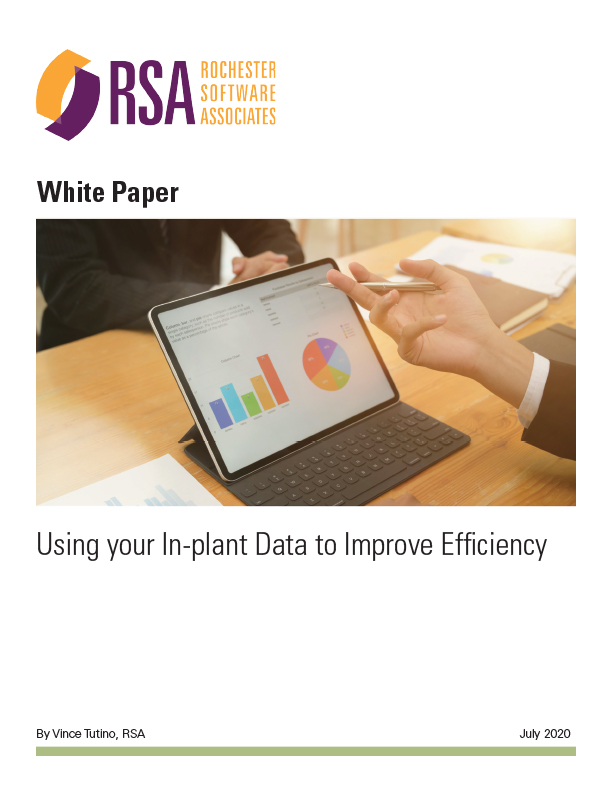- Howie Fenton
- |
- March 04, 2022
This article discusses how an old strategy of using traditional process improvement efforts to increase customer satisfaction, awareness, and sales is still relevant and timeless. This contrasts the previous article that talked about a newer strategy of using video services.

For decades face-to-face contact between the in-plant staff and customers has allowed the staff to demonstrate institutional knowledge and production expertise. The ability to demonstrate this value has been threatened as more customers work from home and more communication, marketing, and sales activities have switched to video services.
Best of the Old: Operational Excellence
Operational excellence is the in-plant's bread and butter. It is what most strive for and achieve. Here is one good example. At the American College and University Printers (ACUP) conference a few years ago, Jimmy Friend and his boss Deborah Leliaert from the University of North Texas (UNT) made a presentation about how the in-plant was losing customers. The presentation started like most PowerPoints, with cordial introductions until slide four, which shocked everybody. It said: "You're Fired!! I am taking my business elsewhere." Leliaert, Vice President, University Relations, Communications and Marketing, said that when Jimmy took over, the in-plant was in such disarray that she and several other departments "fired them."
Friend then detailed the step-by-step process he used to turn things around.
- Internal audit. It started with an internal audit, which found that print quality was poor, customers were complaining about long delays for even simple services, staff attitude was terrible, and out of 200 surveys, only 22 were returned, and 15 of those gave poor reviews.
- Create a plan. It started with staff attitudes. Department supervisors were asked to gather the information that could be used to create a plan that would focus on customers. One of the first mottos created was, "You gotta' have the want to," which meant you have to want to change your attitude to please our customers. Not everyone agreed, and in the next two years, 10 people left voluntarily.
- Know your customers. Fortunately, Friend's five years at Southern Methodist University's in-plant had shown him the importance of customer relations and how to build relationships with "personal contact." As the attitude of the staff changed, a new initiative was created called the PC (Personal Contact) Campaign. Management learned who its 200 most important customers were and started visiting them. According to Friend, it was the PC initiative that was the toughest but most important. He talked about days where he would visit a dozen or more customers and come back beaten, battered, and exhausted.
- Get feedback. Some customers were willing to give the in-plant another try, while others were reluctant and felt that the campaign was just lip service. But after each job, customers were called to check on their satisfaction with it. The phone calls evolved into survey cards—and whenever a card was returned, Friend wrote a personal note of thanks.
Last But Not Least, Measure
Of course, the most important aspect of operational excellence is simply to measure performance, take action, and see if that action improved productivity. W. E. Deming called it the PDCA (plan–do–check–act), Toyota production (which later became Lean Manufacturing) called this "Building people before building cars", and today it is the basis of Agile software development. The key is that this is an iterative process meaning you measure, analyze, take action, and then measure again.
For most companies, the greatest challenge is finding and using metrics that require a change in culture. As strange as it sounds, if everyone starts thinking about measuring, then measurements start to appear. For example, did you know that some Web to Print solutions such as WebCRD can measure the queue of files waiting for the printer and tell you how long it will take to complete? That is, your backlog of work is a measurement of demand vs. capacity and often the bottleneck in production. And as discussed in the book The Goal (Goldratt and by Cox), reduce the size of your bottleneck, and you will increase the throughput of the entire shop. Did you know that WebCRD and some Print MIS systems track work in process with bar codes and compare the "promised" delivered date to the "actual" delivered date? This is a measure of on-time delivery again. If you start thinking about what to measure, you will discover what to measure.
Summary
Things have come a long way since the Jimmy Friend case history. It is no longer a manual process to get this sort of information. If you use a Web to Print solution like RSA's WebCRD, you can provide a survey link in customer ordering emails. Automatic tracking and reporting provide operational data such as orders, customer, revenue and pricing information, and production data that enables operational assessments like service level agreement (SLA) tracking and reporting and operator actions.
However, regardless of the age of the story, the importance of operational excellence will never lose its relevance or value. After working with the management and administration of over 30 in-plants, I know what they value most- working as a good steward of the parent organization, which means constantly working to improve. This case history shows that fixing your production problems, increasing staff engagement, understanding your customers, and responding to your client's changing needs will never be out of date. Additionally, we discussed the importance of creating a culture of continuous process improvement which may require a cultural change.

Learn More About How Improving Operational Excellence Increases Satisfaction, Awareness, and Sales
Learn more about improving operational excellence with your in-plant in RSA's white paper, "Using your In-plant Data to Improve Efficiency." Download the white paper and contact me or RSA to discuss how it will increase your customer's satisfaction, awareness and sales.